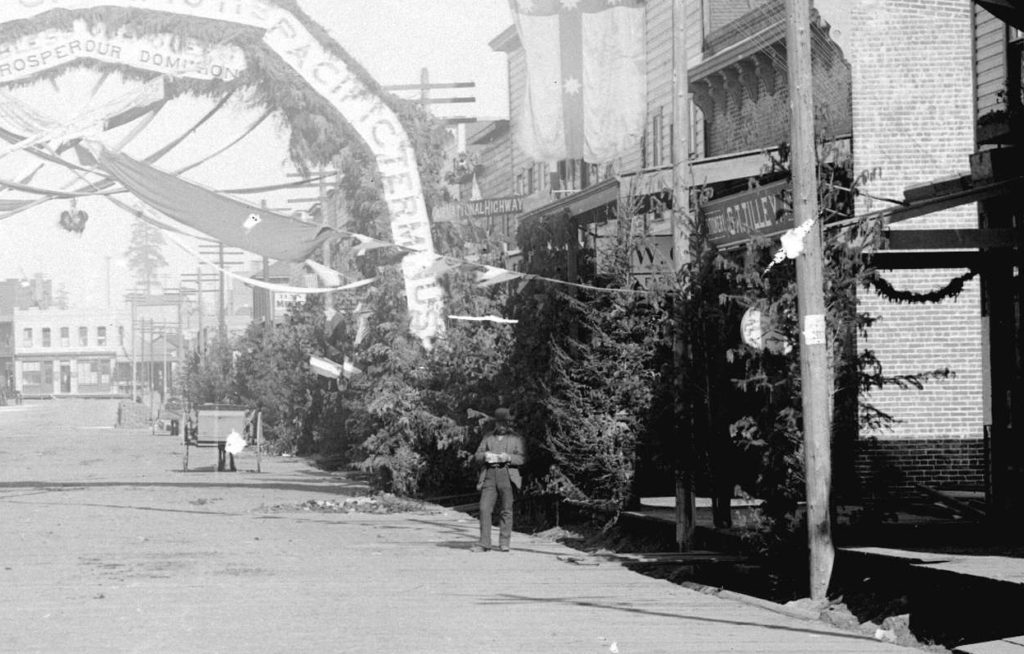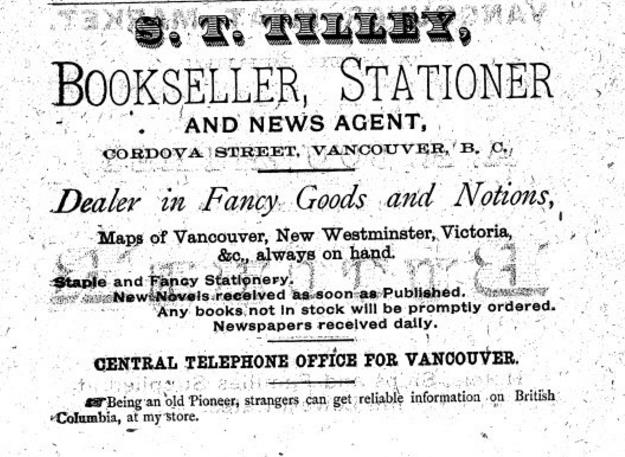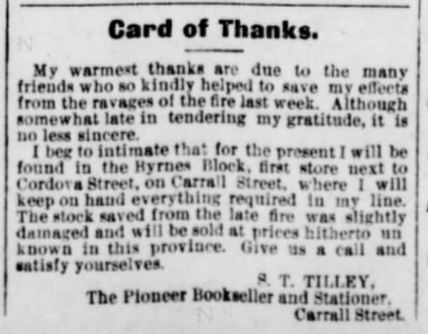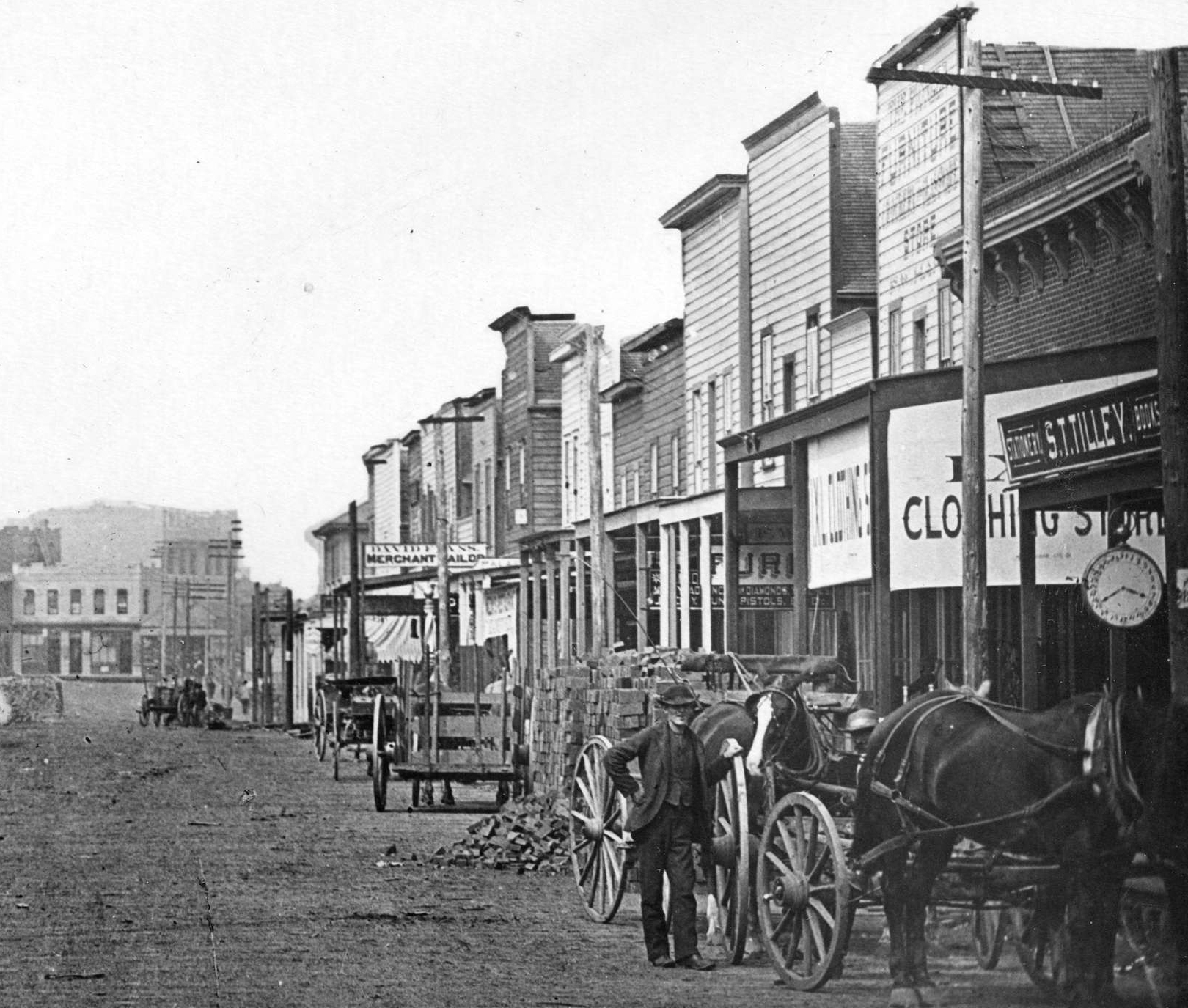Following the devastating fire that destroyed his first Vancouver book and stationery store on Carrall Street in June 1886, Seth Thorne Tilley built a new store at 11 Cordova Street, at the corner of Carrall. A year later, when the first official train arrived at the Vancouver terminus of the Canadian Pacific Railway, he and other merchants showed off their new brick-and-wood premises in such a display of pageantry that it seemed as though the fire had been just a blip on the way to their present prosperity.


By 1888, Tilley’s store was receiving kudos as “one of the finest book and stationery establishments” in Vancouver:
The premises are large and commodious, and the stock, which is complete in every detail, consists principally of a large assortment of books, stationery of all kinds, pictures, engravings, artotypes, etc., also a full line of artists’ materials and fancy goods of every description. Mr. Tilley is a thorough and most reliable man of business, and is highly esteemed in his community. (1)
But just as suddenly as it had the first time, fire once again wreaked havoc with Tilley’s livelihood. In the early morning of February 9, 1889, flames and smoke were noticed coming from a building on Carrall Street, a few doors down from Cordova. The barber shop of Roy and Phillips was soon up in flames, and the fire service was summoned. The fire engine was immediately taken to the water tank at the corner of Water and Powell, but faulty valves rendered it useless, unable to take on any water.
“Although the firemen were on the spot with alacrity, nothing could be done to save the buildings from the devouring element,” read the newspaper account of the blaze (2), which soon spread to the building known as Campbell’s Corner, and then to Tilley’s shop and G.L. Allan’s boot and shoe store next door.
By this time, the fire engine from the Seymour Street fire hall had arrived, but the fire had now been going for 45 minutes and the heat was described as frightful.
Despite the efforts of the fire crew, the Campbell’s Corner building suddenly “fell down with a crash, amid the crackling of timbers, the shouts of firemen, the smashing of bottles and glass, and the thickest of smoke and stream … A number of men with hose got on the roof of the G.L. Allan brick building and fought the fire there and prevented it extending any further” (3). Tilley’s building, however, while not totally demolished, was “only fit for kindling wood and [would] have to be torn down and removed” (4).
It was a hard blow for Tilley. “The well-known and popular stationer,” the Daily World article reported, “is probably the heaviest individual loser, he having just added to his stock, which was valued at about $8,500, and on which he only carried an insurance of $1,000. The telephone company’s service, the central office of which was at the back part of Tilley’s store, is also wrecked and at a standstill” (5).

Mrs. Tilley, who had fainted and been carried out of the building during the early part of the fire, was still “quite prostrated from the shock” of the event several days later and was recovering at St. Luke’s Home, “where every kindness and attention [was] given to her” (6).
But Seth was undefeated. “Phoenix-like,” read the Daily World one week after the fire, Tilley “has again arisen from the flames and ashes, and announces that he is to be found in the Byrnes’ Block, with a full line of goods in stationery and fancy goods” (7).
Notes
(1) The New West (Winnipeg: Canadian Historical Publishing, 1888): 181.
(2) “Very Destructive Fire This Morning,” Vancouver Daily World (February 9, 1889): 4.
(3) Ibid.
(4) Ibid.
(5) Ibid.
(6) Vancouver Daily World (February 11, 1889): 4.
(7) Vancouver Daily World (February 16, 1889): 4.
